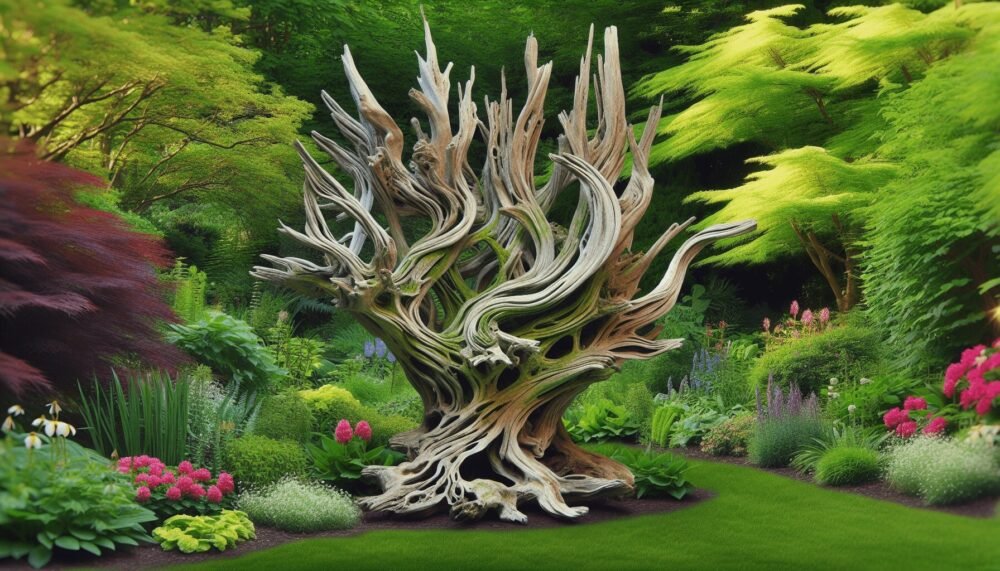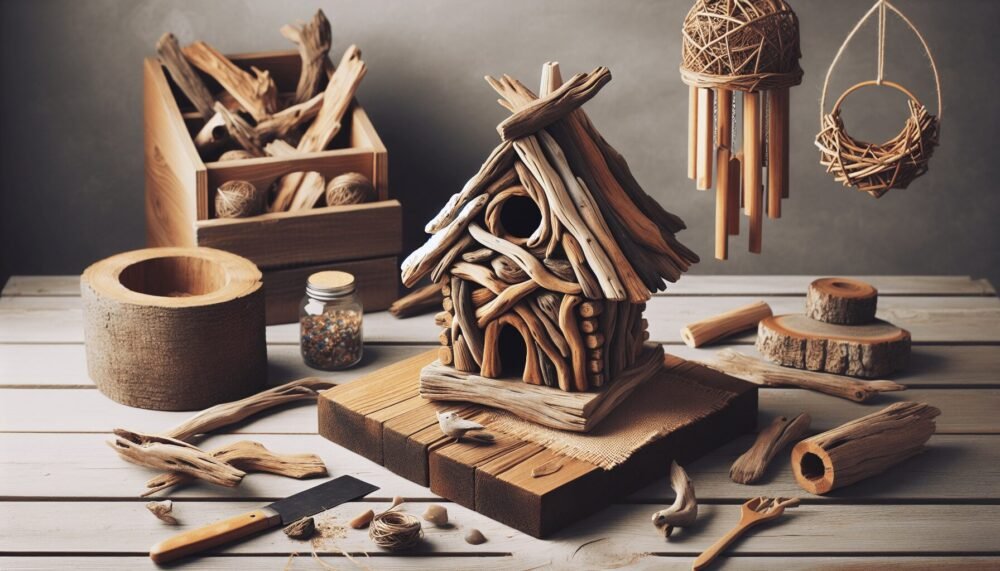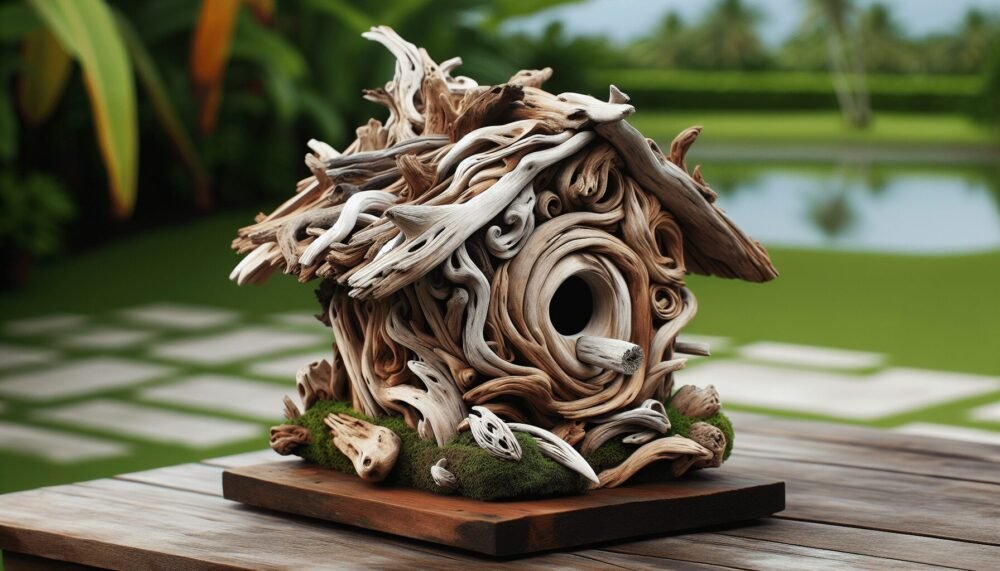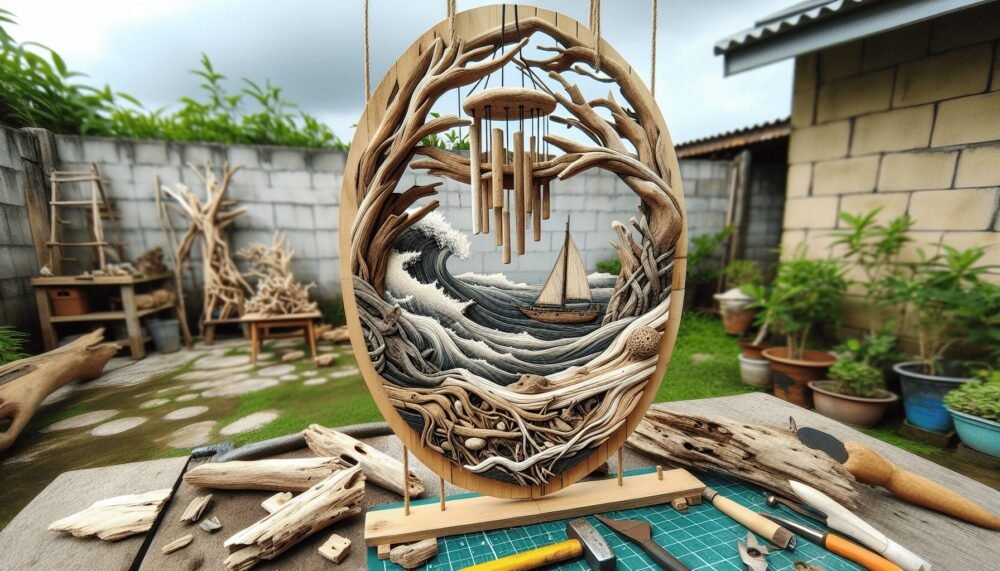Yard Art From Driftwood
Imagine transforming your garden into a unique, whimsical haven using nothing but nature’s remnants. “Yard Art From Driftwood” guides you through the creative process of turning driftwood into stunning works of yard art. You’ll discover tips on selecting the best pieces, simple techniques to bring your ideas to life, and inspiration from completed projects that exude rustic charm. Your backyard is about to become a true masterpiece with art pieces that are both environmentally friendly and strikingly original!
Yard Art From Driftwood
Have you ever looked at a piece of driftwood and wondered what kind of unique yard art you could create with it? Driftwood, with its naturally weathered charm, offers endless possibilities for adding a touch of rustic beauty to your garden or yard. This guide will offer you insights and inspire your creativity to make the most out of this versatile material.
Why Driftwood?
Natural Aesthetic
Driftwood is nature’s art. Each piece is unique, shaped by water and time, creating intricate designs that echo the natural world’s beauty. Placing driftwood art in your yard seamlessly blends your outdoor space with nature.
Eco-Friendly Choice
Using driftwood for art is environmentally friendly. By repurposing these pieces, you’re not only beautifying your yard but also making a positive impact on the environment by reducing waste.
Versatility
Driftwood can be used for a myriad of designs—from simple garden markers to elaborate sculptures. Its versatile nature allows you to experiment and unleash your creativity.
Collecting Driftwood
Where to Find
Driftwood can often be found near lakes, rivers, and coastal areas. Sandy beaches and riverbanks are prime locations to find beautifully weathered pieces.
| Location | Description |
|---|---|
| Beaches | Saltwater driftwood, often smoother and more worn. |
| Riverbanks | Freshwater driftwood, typically less eroded. |
Legal Considerations
Before collecting driftwood, check local regulations and obtain necessary permits. Some areas protect their natural resources, and removing driftwood may be prohibited.
Best Practices for Collecting
- Respect Nature: Only collect what you need and avoid disrupting wildlife habitats.
- Safety First: Wear gloves and sturdy shoes; driftwood can sometimes be sharp or house insects.

Preparing Your Driftwood
Cleaning
Before using driftwood, it’s important to clean it properly:
- Rinse with Water: Remove any loose dirt and debris.
- Soak in Mild Bleach Solution: Mix one part bleach with ten parts water to eliminate any bacteria, fungi, or pests.
- Rinse Thoroughly: Remove all traces of bleach.
- Dry: Allow your driftwood to air dry completely, ideally in a sunny location for several days.
Tools You May Need
- Brushes (soft and hard-bristled)
- Gloves
- Screwdriver or pliers (for removing any embedded nails or sharp objects)
Designing Your Yard Art
Planning Your Project
Consider the following to get started:
- Size and Location: Determine where you want to place your art and how big it should be.
- Inspiration: Look at existing yard art for ideas, or let the unique shapes of your driftwood inspire you.
Simple Projects for Beginners
Garden Markers
Create garden markers by painting or carving the names of your plants onto small pieces of driftwood. These are functional and add a whimsical touch to your garden.
Driftwood Wind Chimes
Simple to make and charming to hear, driftwood wind chimes require only a few pieces of driftwood, some string, and perhaps a few shells or beads for added decoration.
Advanced Projects for the Enthusiast
Driftwood Sculptures
Crafting a sculpture may require a bit more time and skill but is highly rewarding. Let your imagination run wild—think animals, abstract designs, or even large stand-alone pieces that can be the focal point of your yard.
- Tools Needed: Saw, drill, screws, and wood glue.
- Tips: Sketch your design first and build a sturdy base to prevent tipping.
Planters and Shelves
Using larger pieces of driftwood, you can create rustic planters or shelves for succulents and other small plants. These pieces can stand alone or be attached to fencing or walls.

Finishing and Preserving Your Art
Weatherproofing
To ensure your driftwood art lasts outdoors, consider applying a protective finish:
- Clear Sealant: Provides a natural look while protecting from moisture and UV damage.
- Wood Preservatives: These can offer additional protection against pests and fungi.
Maintenance
Regularly check your driftwood art for signs of wear and tear. Reapply sealant as needed, and clean gently to avoid damaging your piece.
Community and Inspiration
Online Communities
Joining online forums and social media groups dedicated to driftwood art can provide valuable tips, inspiration, and support.
| Website | Description |
|---|---|
| Visual inspiration and DIY tutorials | |
| Artists sharing their driftwood creations | |
| Discussion and advice in DIY and art communities |
Workshops and Classes
Consider attending workshops or classes in your local area. These can be excellent opportunities to learn new techniques and connect with fellow enthusiasts.
Conclusion
Creating yard art from driftwood is a fulfilling and eco-friendly way to beautify your outdoor space. With a little imagination, some basic tools, and a bit of time, you can transform simple pieces of driftwood into stunning yard art that reflects your personal style and love for nature. So next time you stroll along a beach or riverbank, don’t just pass by the driftwood—pick it up and start crafting!
What project will you start with? The possibilities are endless!


